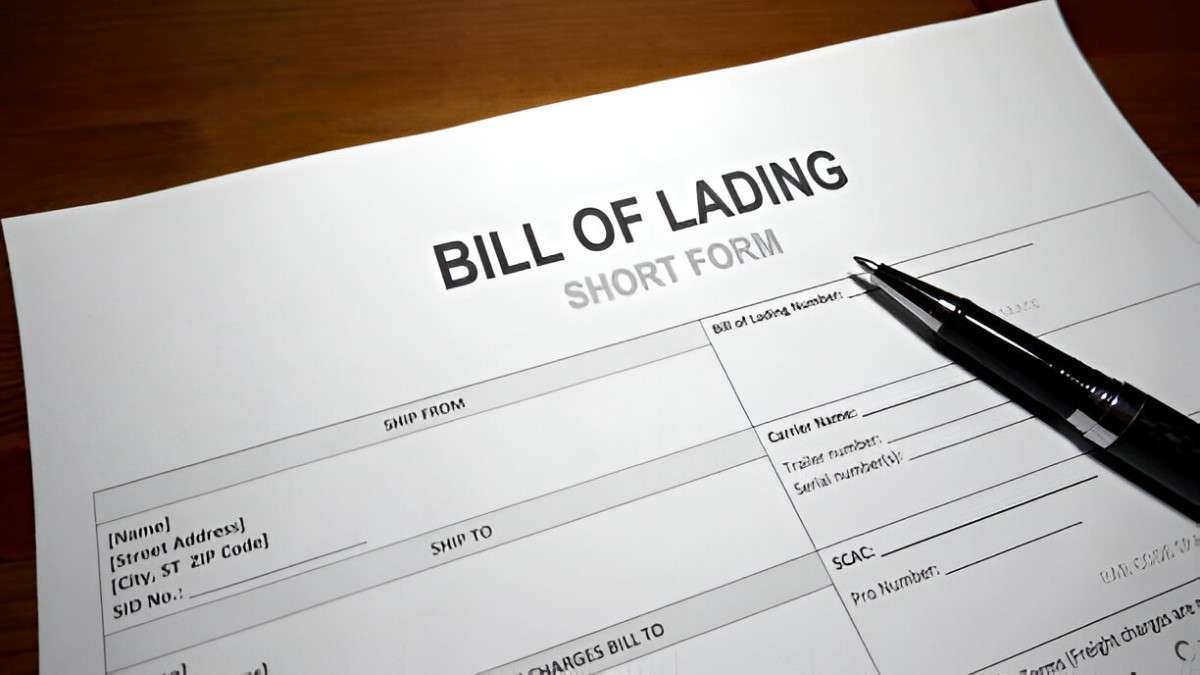A foul bill of lading is a shipping document issued by a carrier or their agent acknowledging receipt of goods for shipment but noting discrepancies or damage to the goods, packaging, or shipment condition. Unlike a clean bill of lading, which confirms that goods were received in satisfactory condition, a foul bill of lading indicates issues or discrepancies that may affect the cargo’s integrity or value upon arrival at its destination.
Table of Contents
Key Features of Foul Bill Of Lading
- Noting Discrepancies: The document explicitly states any damage, irregularities, or discrepancies observed in the goods or packaging.
- Legal Implications: It serves as evidence of the condition of goods at the time of shipment, potentially affecting liability for loss or damage during transit.
- Impact on Insurance Claims: A foul bill of lading may influence insurance coverage and claims settlement processes for damaged or compromised shipments.
How Does a Foul Bill Of Lading Work?
Issuance and Documentation
- Receipt of Goods: The carrier or their agent receives the goods from the shipper or exporter for transport to the consignee.
- Inspection and Notation: During the inspection process, if any discrepancies, damages, or irregularities are identified, they are noted on the bill of lading.
- Acknowledgment and Acceptance: The shipper or exporter acknowledges the foul bill of lading, which serves as a legal document detailing the condition of the goods at the time of shipment.
Legal and Practical Implications
- Liability Allocation: A foul bill of lading shifts responsibility and liability for the noted discrepancies to either the carrier or the shipper, depending on the terms of the shipment contract and applicable laws.
- Insurance Coverage: The issuance of a foul bill of lading may impact insurance coverage for the shipment. Insurance policies often require documentation of the goods’ condition, and discrepancies noted in the bill of lading can influence claims processing.
Example of a Foul Bill Of Lading
Imagine a scenario where a manufacturer ships a consignment of electronic goods to a retailer overseas. Upon receipt of the goods by the carrier, the carrier inspects the shipment and discovers that several boxes show signs of water damage due to improper handling during loading.
In this case:
- Noting Discrepancies: The carrier issues a foul bill of lading, explicitly stating the water damage observed on the affected boxes.
- Legal Implications: The foul bill of lading serves as evidence that the goods were not received in perfect condition, potentially affecting the manufacturer’s liability for the damage.
- Insurance Impact: The manufacturer’s insurance policy may require submission of the foul bill of lading to process a claim for the damaged goods, influencing the outcome of the insurance claim.
Importance and Considerations
Risk Mitigation
Foul bills of lading play a crucial role in risk mitigation for both shippers and carriers by documenting the condition of goods at the point of shipment. They help clarify responsibilities and liabilities in case of disputes or damage during transit.
Legal Documentation
As a legal document, a foul bill of lading provides evidence of the condition of goods at the time of shipment, supporting legal claims, disputes, and insurance settlements related to damaged or disputed shipments.
Compliance and Transparency
Issuing a foul bill of lading ensures transparency in the shipping process, providing all parties involved—shippers, carriers, and consignees—with a clear understanding of the shipment’s condition and any associated risks or liabilities.
Example of Risk Mitigation
In international trade, a foul bill of lading helps protect importers and exporters from disputes over damaged goods. If goods arrive damaged and a clean bill of lading was issued erroneously, the foul bill of lading serves as critical evidence to support a claim for compensation or liability determination.
Challenges and Considerations
Dispute Resolution
Disputes may arise regarding the accuracy or validity of the information noted in a foul bill of lading, requiring careful documentation and communication among parties involved in the shipment.
Impact on Business Relationships
The issuance of a foul bill of lading may strain business relationships between shippers, carriers, and consignees if issues of liability or responsibility are contentious or disputed.
Compliance with Regulations
International shipments may be subject to specific regulations and requirements regarding the issuance and content of bills of lading, including foul bills of lading, necessitating compliance with legal and regulatory standards.
Example of Dispute Resolution
If a carrier disputes the accuracy of damage noted on a foul bill of lading, it may lead to negotiations or legal proceedings to determine liability and responsibility for the damaged goods, impacting business operations and financial outcomes for all parties involved.
Conclusion
Foul bills of lading are essential shipping documents that acknowledge discrepancies, damages, or irregularities in goods at the time of shipment. They serve as legal evidence of the goods’ condition, impacting liability, insurance claims, and dispute resolution in shipping and logistics operations. Understanding the role and implications of foul bills of lading is crucial for businesses involved in international trade and transportation to effectively manage risks, ensure compliance with regulations, and maintain transparent and cooperative relationships throughout the shipping process.





